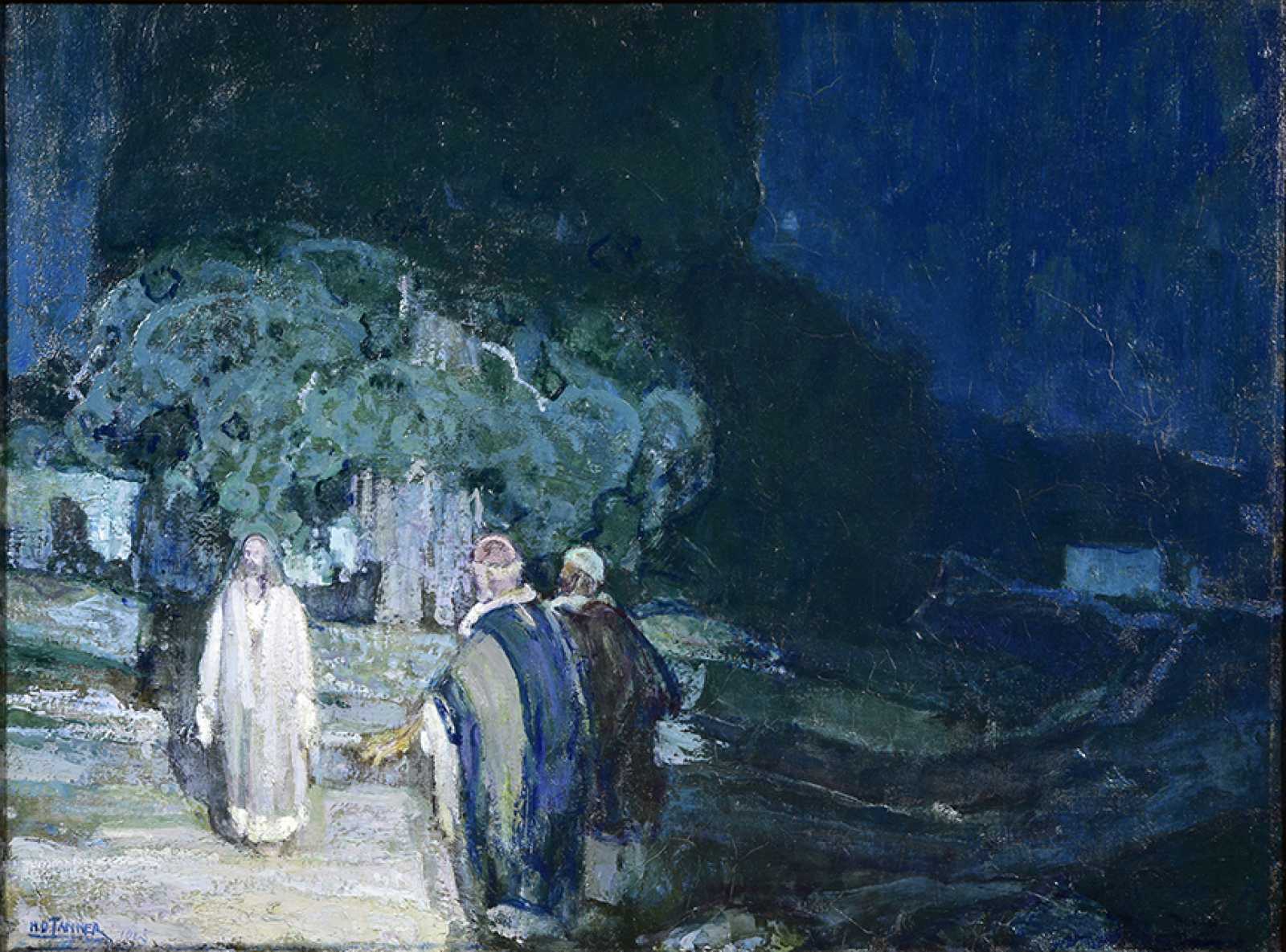Henry Ossawa Tanner
“I cannot fight prejudice and paint at the same time.” Henry Ossawa Tanner (1891)
Henry Ossawa Tanner, best known for his biblical subjects, was inspired by his visits to the Holy Land starting in 1897. The dramatic scene in Christ on the Mount of Olives depicts Jesus with two figures in the Garden of Gethsemane, most likely on the night he was arrested prior to his crucifixion. Dressed in white and appearing forlorn, Jesus stands before what are likely two of his disciples. The intense white light and Tanner’s loose, expressive brushstrokes add spatial depth, emotion and mood to the environment. His limited palette of indigos and turquoise—referred to as “Tanner blues”—evokes a somber and introspective religiosity.
Born and raised in Pennsylvania, Tanner was profoundly influenced by his parents in both his life and art. His mother, from Virginia, had escaped slavery through the Underground Railroad; his father, a teacher and minister, became bishop of the African Episcopalian Church. His unusual middle name was derived from Osawatomie, Kansas, where the abolitionist John Brown had initiated his antislavery campaign. In 1879 Tanner enrolled in the prestigious Pennsylvania Academy of Fine Art where he studied with the American painter Thomas Eakins, who had the greatest impact on Tanner’s early style, and where he developed a life-long friendship with fellow art student Robert Henri. Following his schooling, Tanner departed for Europe in 1891 to study in Paris. Due to the racism he encountered in the United States, Tanner remained in France for 46 years. There he achieved acclaim and in 1923 was awarded the highest national honor—the Chevalier of the Legion of Honor. However, Tanner also maintained a connection to the U.S. through occasional visits. In 1927, Tanner became the first African-American artist to receive full membership in National Academy of Design, New York.
Henry Ossawa Tanner (American, 1859-1937), Christ on the Mount of Olives, 1925, oil on canvas, 19 1/2 x 26 1/8 inches. Gift of Robert Vitkin in memory of Jeannette Vitkin, 20-1999.

